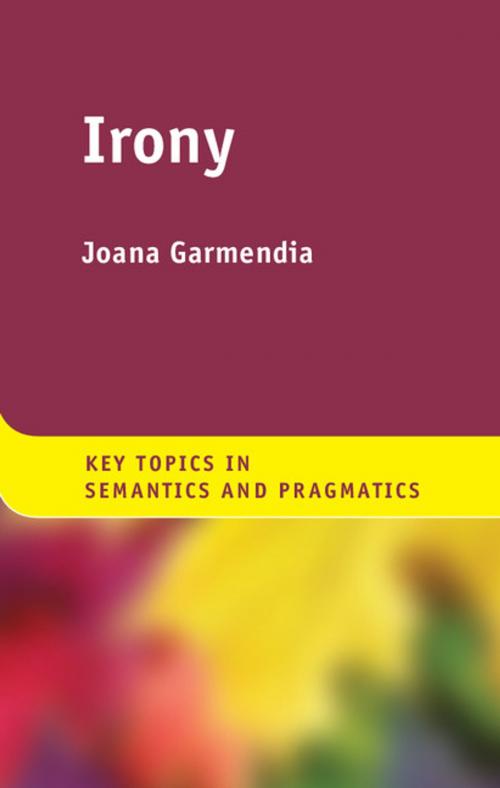| Author: | Joana Garmendia | ISBN: | 9781108602631 |
| Publisher: | Cambridge University Press | Publication: | February 28, 2018 |
| Imprint: | Cambridge University Press | Language: | English |
| Author: | Joana Garmendia |
| ISBN: | 9781108602631 |
| Publisher: | Cambridge University Press |
| Publication: | February 28, 2018 |
| Imprint: | Cambridge University Press |
| Language: | English |
Irony is an intriguing topic, central to the study of meaning in language. This book provides an introduction to the pragmatics of irony. It surveys key work carried out on irony in a range of disciplines such as semantics, pragmatics, philosophy and literary studies, and from a variety of theoretical perspectives including Grice's approach, Sperber and Wilson's echoic account, and Clark and Gerrig's pretense theory. It looks at a number of uses of irony and explores how irony can be misunderstood cross-culturally, before delving into the key debates on the pragmatics of irony: is irony always negative? Why do speakers communicate via irony, and which strategies do they usually employ? How are irony and sarcasm different? Is irony always funny? To answer these questions, basic pragmatic notions are introduced and explained. It includes multiple examples and activities to enable the reader to apply the theoretical frameworks to actual everyday instances of irony.
Irony is an intriguing topic, central to the study of meaning in language. This book provides an introduction to the pragmatics of irony. It surveys key work carried out on irony in a range of disciplines such as semantics, pragmatics, philosophy and literary studies, and from a variety of theoretical perspectives including Grice's approach, Sperber and Wilson's echoic account, and Clark and Gerrig's pretense theory. It looks at a number of uses of irony and explores how irony can be misunderstood cross-culturally, before delving into the key debates on the pragmatics of irony: is irony always negative? Why do speakers communicate via irony, and which strategies do they usually employ? How are irony and sarcasm different? Is irony always funny? To answer these questions, basic pragmatic notions are introduced and explained. It includes multiple examples and activities to enable the reader to apply the theoretical frameworks to actual everyday instances of irony.















